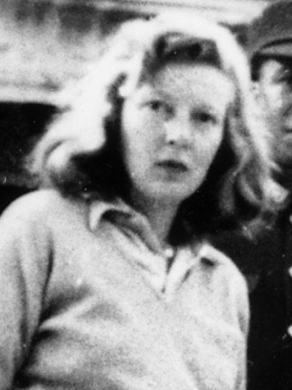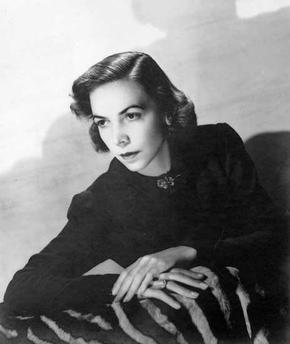
Virginity is the state of a person who has never engaged in sexual intercourse; it is considered a social construct, not an objective term with an operational definition. Social definitions of virginity therefore vary. Heterosexual individuals may or may not consider loss of virginity to occur only through penile-vaginal penetration, while people of other sexual orientations often include oral sex, anal sex, or manual sex in their definitions of losing one's virginity. The term virgin encompasses a range of definitions, as found in traditional, modern and ethical concepts. Religious rituals for regaining virginity exist in many cultures. Some men and women consider themselves born-again virgins.

Ernest Taylor Pyle was an American journalist and war correspondent who is best known for his stories about ordinary American soldiers during World War II. Pyle is also notable for the columns he wrote as a roving human-interest reporter from 1935 through 1941 for the Scripps-Howard newspaper syndicate that earned him wide acclaim for his simple accounts of ordinary people across North America. When the United States entered World War II, he lent the same distinctive, folksy style of his human-interest stories to his wartime reports from the European theater (1942–44) and Pacific theater (1945). Pyle won the Pulitzer Prize in 1944 for his newspaper accounts of "dogface" infantry soldiers from a first-person perspective. He was killed by enemy fire on Iejima during the Battle of Okinawa.

Martha Ellis Gellhorn was an American novelist, travel writer, and journalist who is considered one of the great war correspondents of the 20th century. She reported on virtually every major world conflict that took place during her 60-year career.

Georgette Louise Meyer known as Dickey Chapelle was an American photojournalist known for her work as a war correspondent from World War II through to her death in the Vietnam War.

Florence Ellinwood Allen was a United States circuit judge of the United States Court of Appeals for the Sixth Circuit. She was the first woman to serve on a state supreme court and one of the first two women to serve as a United States federal judge. In 2005, she was inducted into the National Women's Hall of Fame.

Marguerite Higgins Hall was an American reporter and war correspondent. Higgins covered World War II, the Korean War, and the Vietnam War, and in the process advanced the cause of equal access for female war correspondents. She had a long career with the New York Herald Tribune (1942–1963) and as a syndicated columnist for Newsday (1963–1965). She was the first woman to win a Pulitzer Prize for Foreign Correspondence awarded in 1951 for her coverage of the Korean War. She subsequently won Long Island University's George Polk Award for Foreign Reporting for articles from behind enemy lines in Korea and other nations in 1952.

Sigrid Schultz was a notable American reporter and war correspondent in an era when women were a rarity in both print and radio journalism. Working for the Chicago Tribune in the 1920s, she was the first female foreign bureau chief of a major U.S. newspaper.
Homer William Bigart was an American reporter who worked for the New York Herald Tribune from 1929 to 1955 and for The New York Times from 1955 to his retirement in 1972. He was considered a "reporter's reporter" and an "enduring role model." He won two Pulitzer Prizes as a war correspondent, as well as most of the other major journalism awards.

Tania Long was an American journalist and war correspondent during World War II.

Anne O'Hare McCormick was an English-American journalist who worked as a foreign news correspondent for The New York Times. In an era where the field was almost exclusively "a man's world", she became the first woman to receive a Pulitzer Prize in a major journalism category, winning in 1937 for correspondence. In 1936, she became the first woman to be appointed to the editorial board of the Times, where she began a regular column on foreign policy in 1937.

Albert Merriman Smith was an American wire service reporter, notably serving as White House correspondent for United Press International and its predecessor, United Press. He won the Pulitzer Prize in 1964 for his coverage of the assassination of John F. Kennedy and was awarded the Presidential Medal of Freedom in 1969 by Lyndon B. Johnson.

Women in journalism are individuals who participate in journalism. As journalism became a profession, women were restricted by custom from access to journalism occupations, and faced significant discrimination within the profession. Nevertheless, women operated as editors, reporters, sports analysts and journalists even before the 1890s in some countries as far back as the 18th-century.

Alice Allison Dunnigan was an American journalist, civil rights activist and author. Dunnigan was the first African-American female correspondent to receive White House credentials, and the first black female member of the Senate and House of Representatives press galleries. She wrote an autobiography entitled Alice A. Dunnigan: A Black Woman's Experience. She is commemorated by an official Kentucky Historical Society marker.

(Harriet) Virginia Spencer Cowles was an American journalist, biographer, and travel writer. During her long career, Cowles went from covering fashion, to covering the Spanish Civil War, the turbulent period in Europe leading up to World War II, and the entire war. Her service as a correspondent was recognized by the British government with an OBE in 1947. After the war, she published a number of critically acclaimed biographies of historical figures. In 1983, while traveling with her husband, she was killed in an automobile accident which left him severely injured.

Sonia Tomara was a Russian-born journalist who is regarded as the first female war correspondent of World War II. Tomara is known for her foreign and war reporting for the New York Herald Tribune. As a staff writer, she reported on the onset of World War II in Europe, including the German invasion of Poland and the fall of France. Tomara reported from India, Burma, China, Egypt, and Iran. In 1943, she covered the Tehran Conference. By 1944, Tomara had returned to Europe to report on the Normandy campaign, the liberation of Paris, and the Seventh Army's advance through Alsace.

Edward Thomas Folliard was an American journalist. He spent most of his career at The Washington Post, for which he covered the White House from the presidency of Calvin Coolidge to that of Lyndon B. Johnson. He had friendly relations with both Harry S. Truman and Dwight D. Eisenhower that continued beyond those men's presidencies.
Anthony Harry Leviero was an American journalist who spent over two decades as a reporter for The New York Times. He won the Pulitzer Prize for National Reporting in 1952.

Elizabeth L. Gardner was an American pilot during World War II who served as a member of the Women Airforce Service Pilots (WASP). She was one of the first American female military pilots and the subject of a well-known photograph, sitting in the pilot's seat of a Martin B-26 Marauder.
C. V. R. Thompson was a journalist from the United Kingdom, who reported from the United States from 1933 until his death in 1951. His obituary in The New York Times called him the "dean of the English newspaper corps." He served as president of the Foreign Correspondents Association.
Judy Barden was a journalist from the United Kingdom who lived and worked in the United States.
















